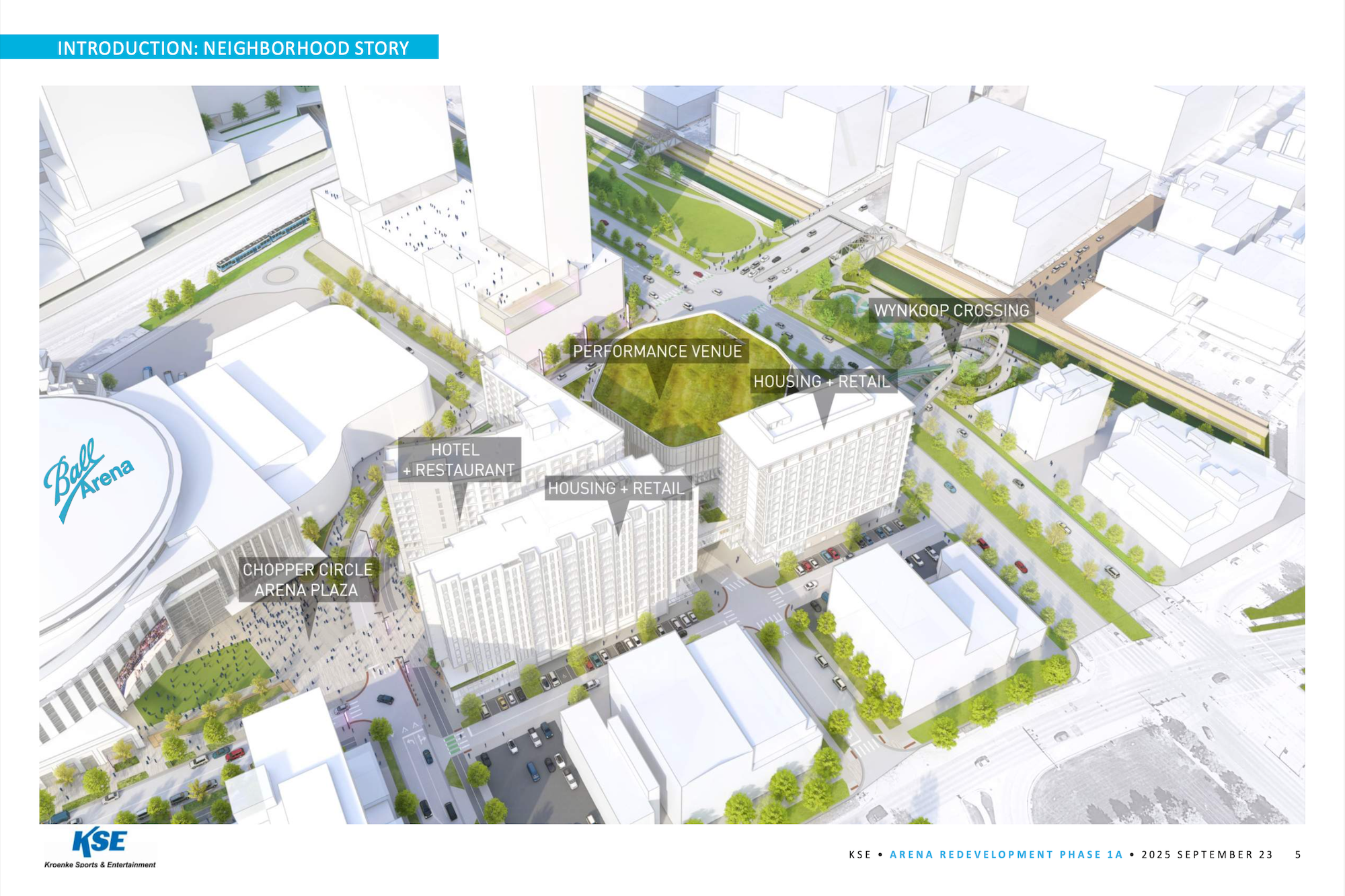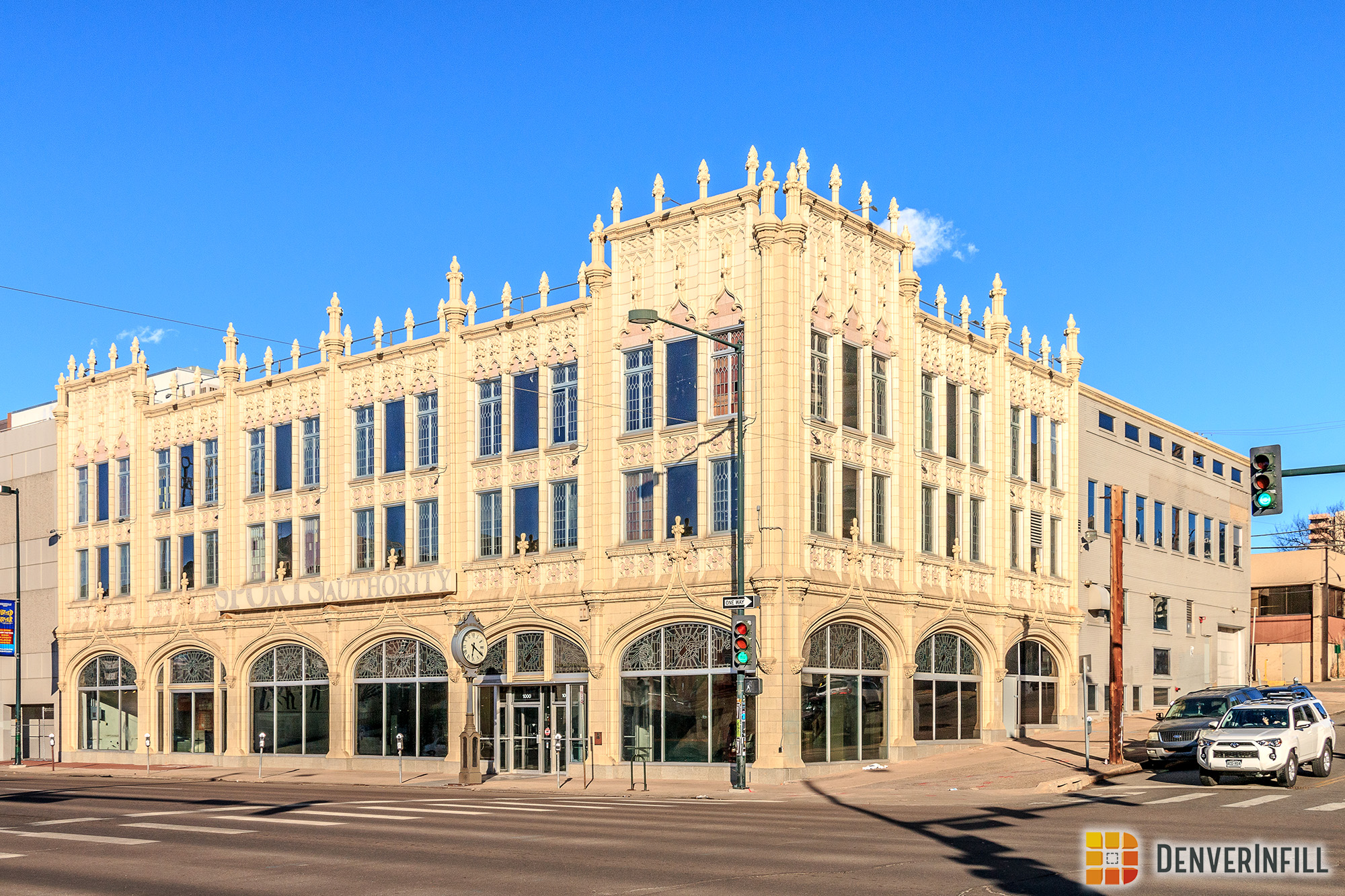One goal of mine was to check out their Union Station. As you may recall, I’m on the board of Union Station Advocates and seeing how other cities have restored or reused their historic train stations can be helpful to our efforts here in Denver. Indy’s historic Union Station today is a conference center linked to the Crowne Plaza Hotel next door. The station was restored and tranformed into a conference center in 1986 at a cost of $50 million. The Indy station is located in their Wholesale District, a LoDo-like cultural and entertainment historic area on the edge of the central business district. Unlike in Denver, however, their station isn’t a hub (current or planned) for a multi-modal transit network. The only trains that still stop at the Indy Union Station are a couple of Amtrak trains a week.
Indy’s Union Station is gorgeous. It was built as a far more elaborate and ornate building than Denver’s, and the 1986 renovation beautifully restored the building. It was nice seeing its grand halls and corridors used for public functions. Here are some pics:
The outside:
The great hall:
Corridors and other inside spaces:
(That last photo is of historic rail cars that have been brought inside the building and made into hotel rooms. Pretty cool.)
Overall, the station building seems to be in great shape and appears to be a popular place. On the down side, while the building’s rail history is celebrated throughout the building, the fact that rail transit is no longer a significant (or even a modest) use anymore is sort of sad. In fact, after walking around inside and out, I never did find the platform where the occasional Amtrak train arrives.
Determining the use and programming mix for the interior of Denver’s Union Station upon its redevelopment is an important step that has not yet been publicly addressed by the DUS project team. Finding the right balance of transit services and public waiting areas, retail and restaurants, offices, cultural, and other community uses is not only critical to the long-term success of Denver’s historic train station itself, but the planned public plazas that surround it. It doesn’t make any sense to try to design the outdoor public spaces around the station when you don’t know what the interior uses that border and define those spaces are going to be. This is an issue that Union Station Advocates is working to push to the forefront.
One other place I checked out in downtown Indianapolis was Monument Circle, which features a very impressive 284-foot obelisk surrounded by public art, fountains, trees and grass, and a brick-paved plaza that serves both automobiles and pedestrians. From observation, it appears the pedestrian has the priority over cars anywhere within the circle, with peds wandering around wherever they want and the slowly driving cars yielding on cue.
Another nice design feature in the circle is the brick pavers used throughout, with elements like bollards, lightposts, trees, and different colored pavers used to designate zones for cars and people, instead of standard curb, gutter, and surface materials like concrete or asphalt. This is a concept we hope to see incorporated at Denver’s Union Station, where the pavers used in the Wynkoop Plazas would extend across Wynkoop Street to the fronts of the facing buildings and down 17th Street to Wazee, making the streets and plazas into a unified public space. Under this design, Wynkoop could be closed to traffic for special events and have the entire area read as a seamless public space. Here are some photos of Indy’s Monument Circle:

























Interesting stuff. I'm wondering what time of day you visited Monument Circle. It does look quite walkable. But at first glance, in six pictures, I count a total of only seven people walking. Where is everyone?
Chris, it was about 4:00 PM on a Tuesday afternoon. Not a peak pedestrian time.
Downtown is nice due to the excellent urban planning when the city was created and a concerted effort to bring and keep professional sports downtown during the 70s and 80s. However, there is no light rail, no sidewalks immediately outside of downtown, and a proliferation of surface parking lots. Pennsylvania Avenue is a good pedestrian oriented neighborhood is it is an expception. As for the pedestrians they are probably at the Circle Center Mall which is an indoor version of 16th Street.
I frequently stay in downtown Indianapolis at a hotel overlooking the Circle, and these photos accurately represent the activity level I've seen–including weekdays, weekends, and most times of the day. The blocks immediately surrounding the Circle have some older buildings with wonderful ornate detailing on the facades. And it's a pleasure to shop in a grand old downtown department store (Carson Pirie Scott). All in all, though, there isn't the intensity of pedestrian activity that creates the sense of a truly prosperous and vital downtown.
As a native Hoosier it's good to see you did get to Indianapolis. For all of it's shortcomings (mostly transit…) Indianapolis has an interesting history.
Interesting and kind of ironic fact: Indianapolis Union Station is one of the first union stations in the world and I believe the first in the nation, beating out Chicago, New York, etc. in this idea. Sadly it is not used the way it could be.
If you go back I suggest you look at the canal district, kind of the newest neighborhood just to the west of downtown. There is the National Medal of Honor memorial, the Indiana State Museum and a wide variety of public spaces and art. It is one of the few things I truely enjoy about Indy. Enjoy!
Nice pictures of Indy. I've driven through, but never stopped in. The downtown looks nice, but I wonder if the lack of pedestrians is due to the lack of densely populated city center neighborhoods. From the freeway, the city core immediately outside of downtown looks dilapidated and underdeveloped like a lot of other midwestern cities. As a native Ohioan, I think the central neighborhoods are one area where Denver has done an excellent job.
I didn't realize the historic nature of Oompa Loompa's (last picture) and trains.
Nice bones for a city center. I wish Denver used more pavers and had more curves.
* Interesting pictures.
* The lack of integration with the original station in the DUS plan is very unfortunate.
* We've got to get you out here for a tour of the big east coast stations.